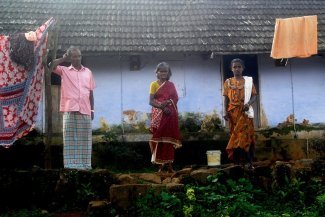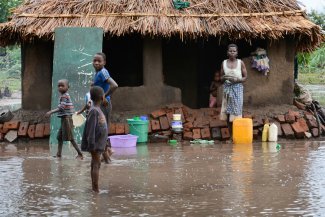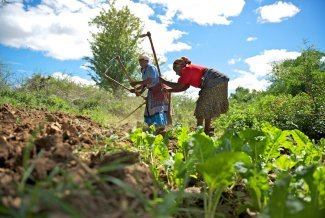For several months, nearly 1.35 million people have been struggling to eat their fill in southern Madagascar. According to the World Food Programme (WFP), this could be the first famine in the world caused by climate change.
Since May, the country has been going through a dry season, as it does every year. But for several years now, this period has been transformed into a form of drought that is becoming increasingly severe, dramatically affecting agricultural crops and therefore the food resources of local populations. The Malagasy call this phenomenon kere. Poverty and malnutrition are spreading throughout the country, as people try to feed themselves as best they can.
On the situation in Madagascar, Alice Rahmoun, a WFP communications manager based in the capital city of Antananarivo, said: “In some areas, people are still able to plant something, but it is not easy at all. So they are trying to grow sweet potatoes. But in other areas, absolutely nothing is growing right now. People are surviving only eating locusts, fruit and cactus leaves. And cactus leaves are usually used for cattle; they are not for human consumption.”
Witnessing people’s difficult daily life, the Madagascar-based photographer Rijasolo criss-crossed the villages of the south in August and September 2021, for Agence France Presse (AFP). Here, Equal Times republishes some of his pictures.

Jonarson Revoria (standing), 73 years old, and his wife Maho (far left), 60 years old, and their 48-year-old daughter Miza Angeline Rasoanandrasana (in the middle) are photographed in the village of Ankilidoga, in the commune of Sampona, on 31 August 2021.
Jonarson Revoria usually grows peanuts, cassava, sweet potatoes or corn. But this year he could not produce anything because of the drought. He has a small basin dug in the ground to collect rainwater, but it has not been filled since July 2021. Today his wife and daughter prepare anamafaitsy leaves for lunch, a kind of weed that they boil with a lot of salt to remove the bitterness. They have no rice to accompany this meal.

Mrs Behora (left), about 80 years old, and her daughter Ndakope (right), 67 years old, pose for a photograph in front of their house in the village of Fenoaivo, in the commune of Ifotaka, on 30 August 2021.
On a small plot of land next to their home totalling no more than two square metres, the two women still manage to grow some onions and tomatoes, despite the lack of rain.

Mrs Behora stirs food in a pot at her house.
For lunch, she managed to find a half-cup of beans for her and her daughter to share, but the beans are already spoilt.

Children lead their herd of zebus (humped cattle) near Amboasary Atsimo on the National Road 13 (RN13), on 31 August 2021.
The RN13 links the city of Fort-Dauphin on the south-east coast and the city of Toliara on the south-west coast. In southern Madagascar, the national roads are mostly very bad and this is a real obstacle to the economic development of the region.

A water tank in the village of Ankilidogaon, 31 August 2021.
The water tank was built free of charge to collect rainwater, but villagers can’t remember when this tank was last filled.

People gather at a small vegetable stall on a street in Amboasary Atsimo. The price of a cup of (imported) rice is currently between 750 and 1000 ariary (US$0.19 and US$0.26) and can even rise to 2000 ariary (US$0.52) in the most remote areas.
It is very difficult to find meat. Zebu meat is very rarely sold and is very expensive (almost 40,000 Ariary per kilo/US$10) because the zebu is rather reserved for exceptional events such as funerals and weddings. Chicken or goat meat is most commonly found on the market stalls of this region of Madagascar.

Fitamantsoa (left) is the father of Satinompeo (centre), a five-year-old girl who weighs only 11 kg and shows signs of severe malnutrition. He accompanies her while she is consulted urgently by Dr. Lina Soatineza (right), a doctor at the mobile clinic of Doctors Without Borders (MSF), in the village of Befeno, Commune Marovato, on 2 September 2021.
Since March 2021, MSF has set up a permanent presence in southern Madagascar, in Amboasary Atsimo and Ambovombe, in order to urgently help the local population. Since June 2021, MSF has also set up several mobile clinics to help treat the most serious cases of moderate and severe malnutrition.














